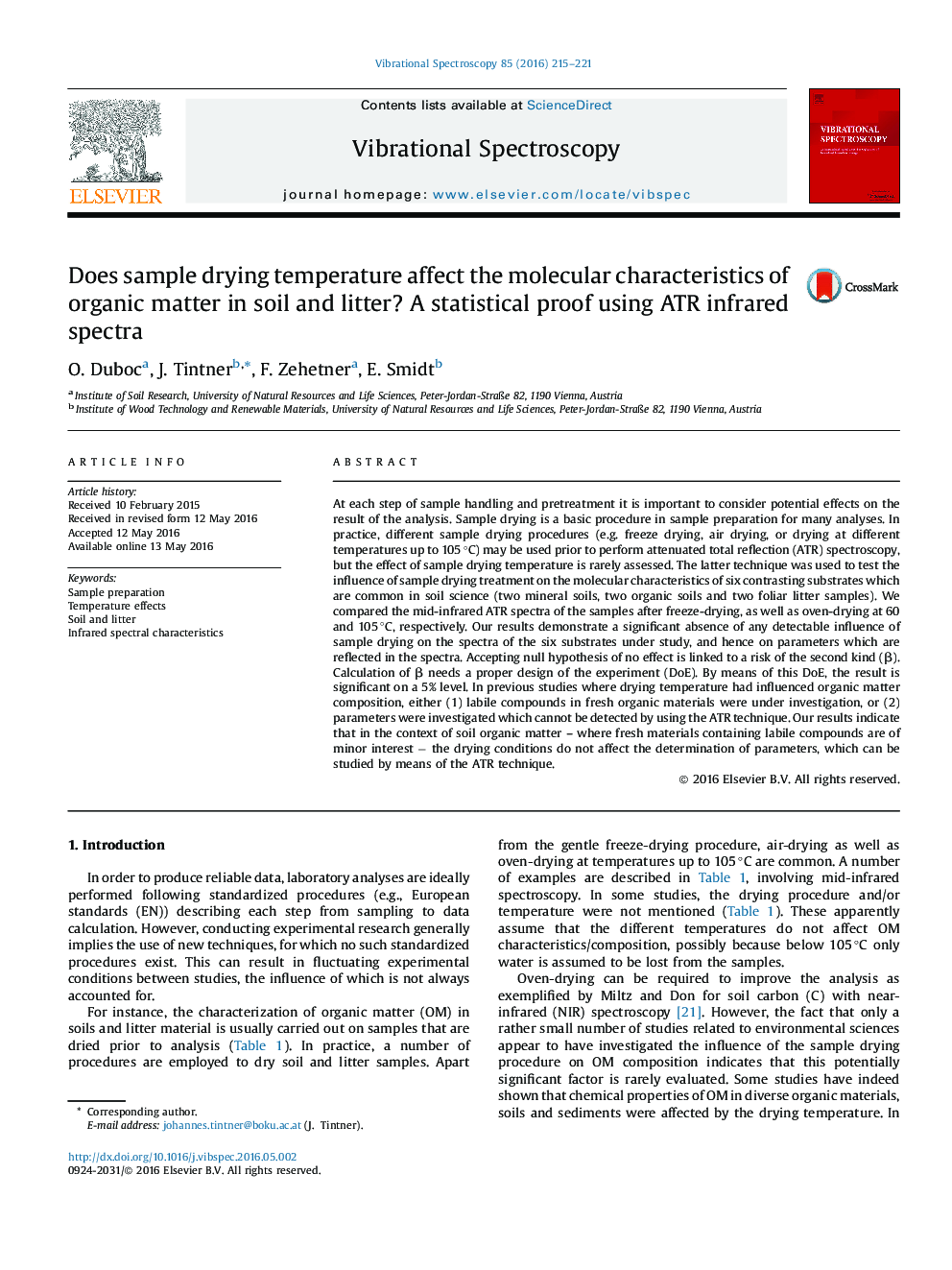| Article ID | Journal | Published Year | Pages | File Type |
|---|---|---|---|---|
| 1249574 | Vibrational Spectroscopy | 2016 | 7 Pages |
At each step of sample handling and pretreatment it is important to consider potential effects on the result of the analysis. Sample drying is a basic procedure in sample preparation for many analyses. In practice, different sample drying procedures (e.g. freeze drying, air drying, or drying at different temperatures up to 105 °C) may be used prior to perform attenuated total reflection (ATR) spectroscopy, but the effect of sample drying temperature is rarely assessed. The latter technique was used to test the influence of sample drying treatment on the molecular characteristics of six contrasting substrates which are common in soil science (two mineral soils, two organic soils and two foliar litter samples). We compared the mid-infrared ATR spectra of the samples after freeze-drying, as well as oven-drying at 60 and 105 °C, respectively. Our results demonstrate a significant absence of any detectable influence of sample drying on the spectra of the six substrates under study, and hence on parameters which are reflected in the spectra. Accepting null hypothesis of no effect is linked to a risk of the second kind (β). Calculation of β needs a proper design of the experiment (DoE). By means of this DoE, the result is significant on a 5% level. In previous studies where drying temperature had influenced organic matter composition, either (1) labile compounds in fresh organic materials were under investigation, or (2) parameters were investigated which cannot be detected by using the ATR technique. Our results indicate that in the context of soil organic matter – where fresh materials containing labile compounds are of minor interest − the drying conditions do not affect the determination of parameters, which can be studied by means of the ATR technique.
